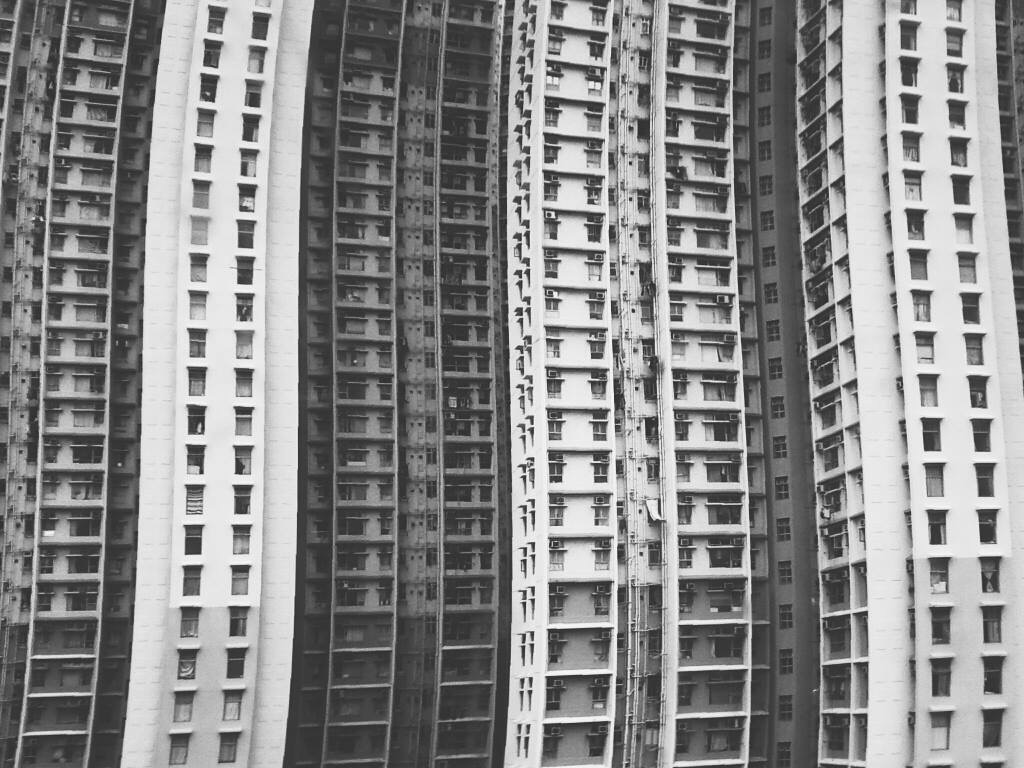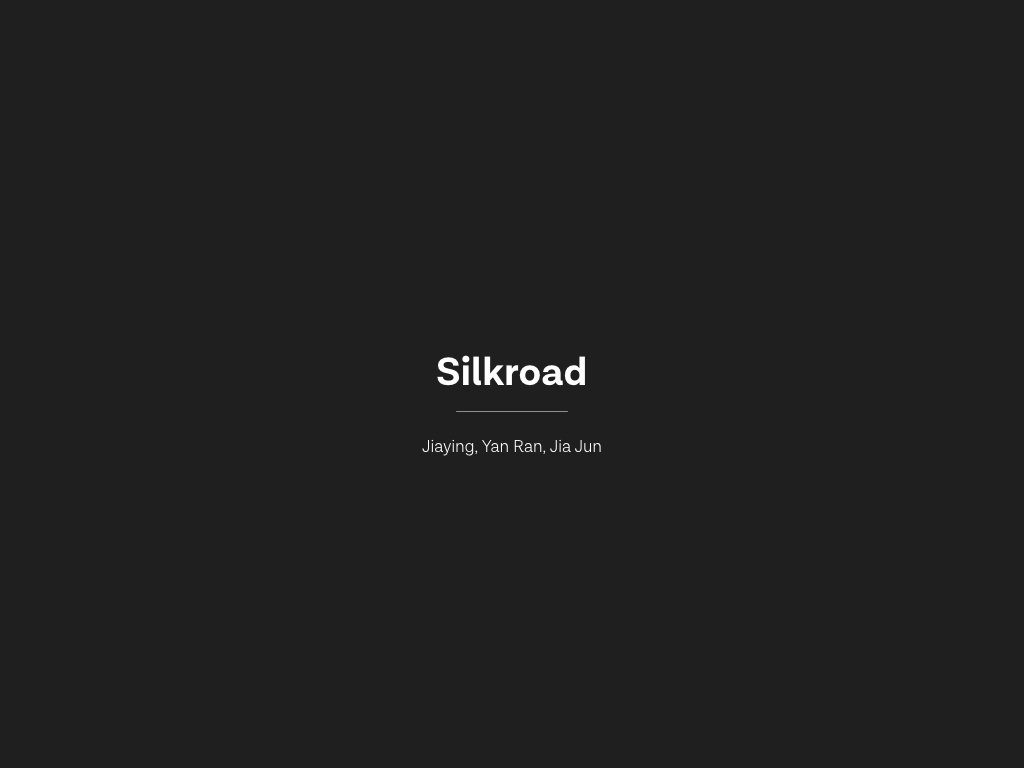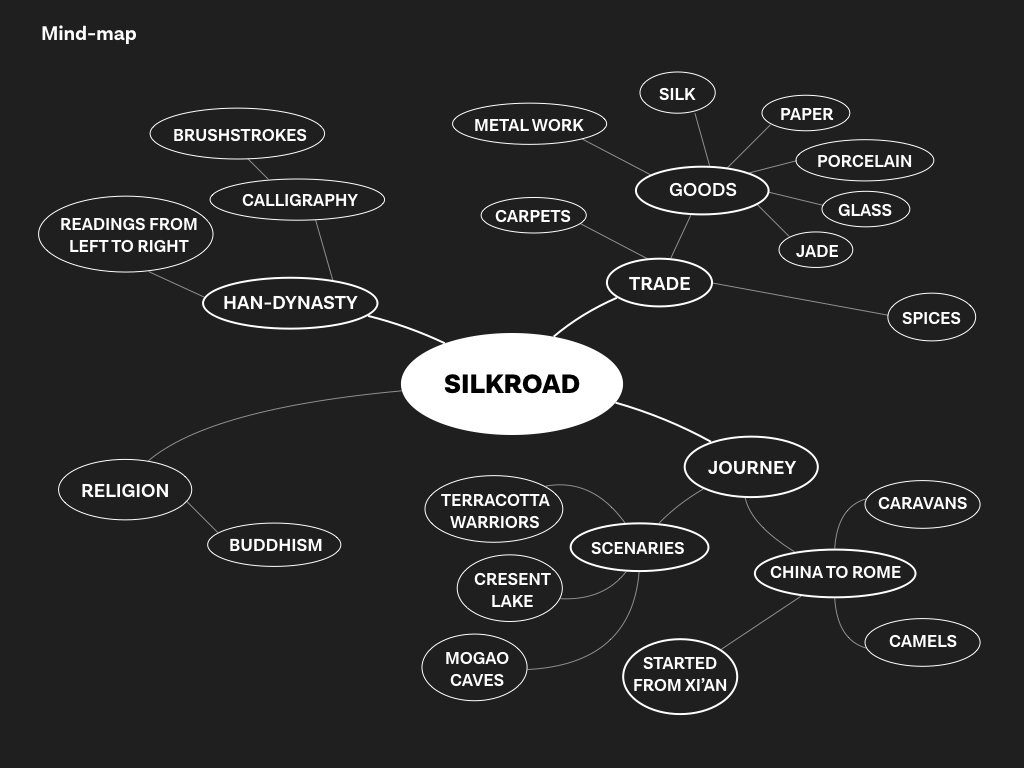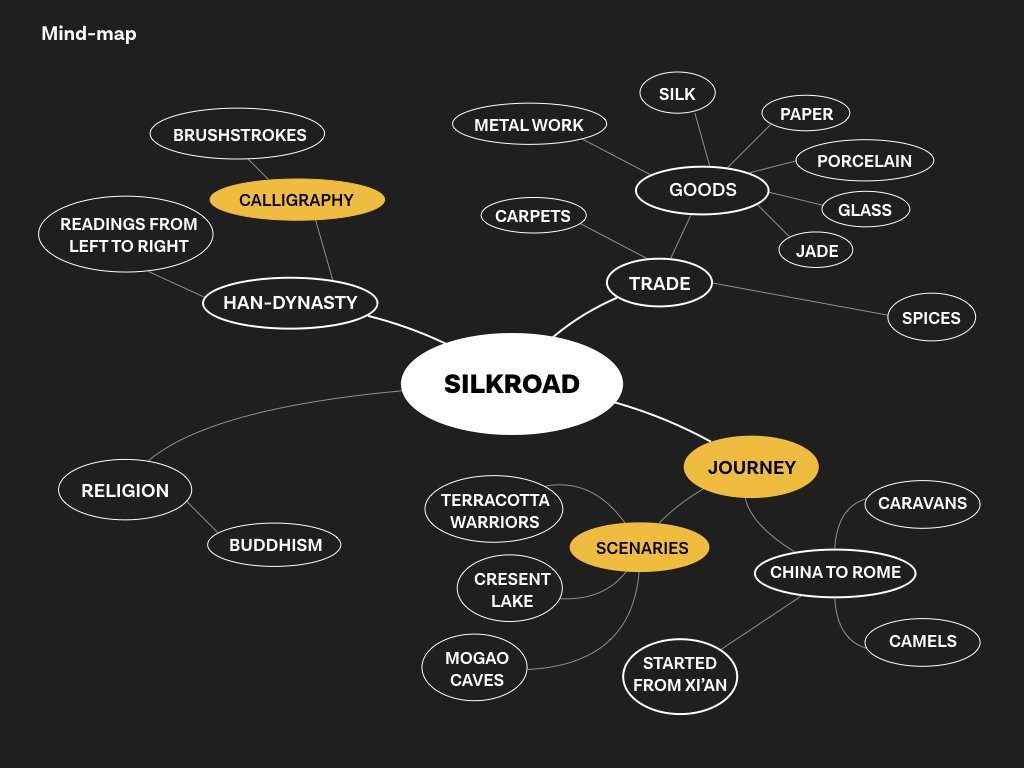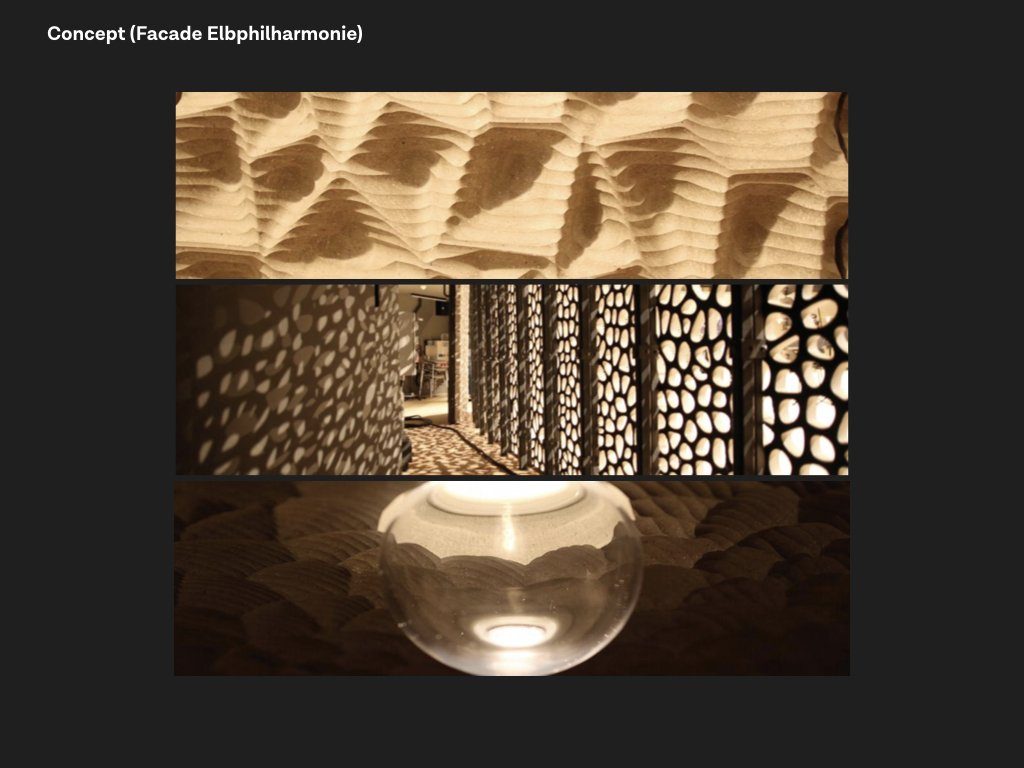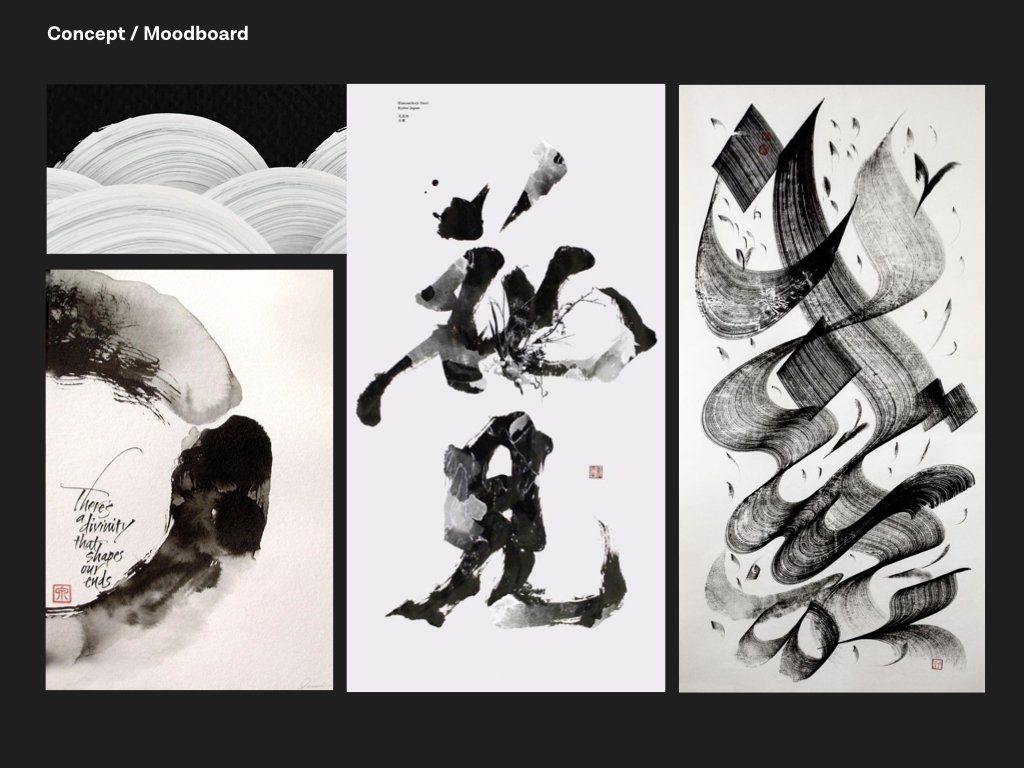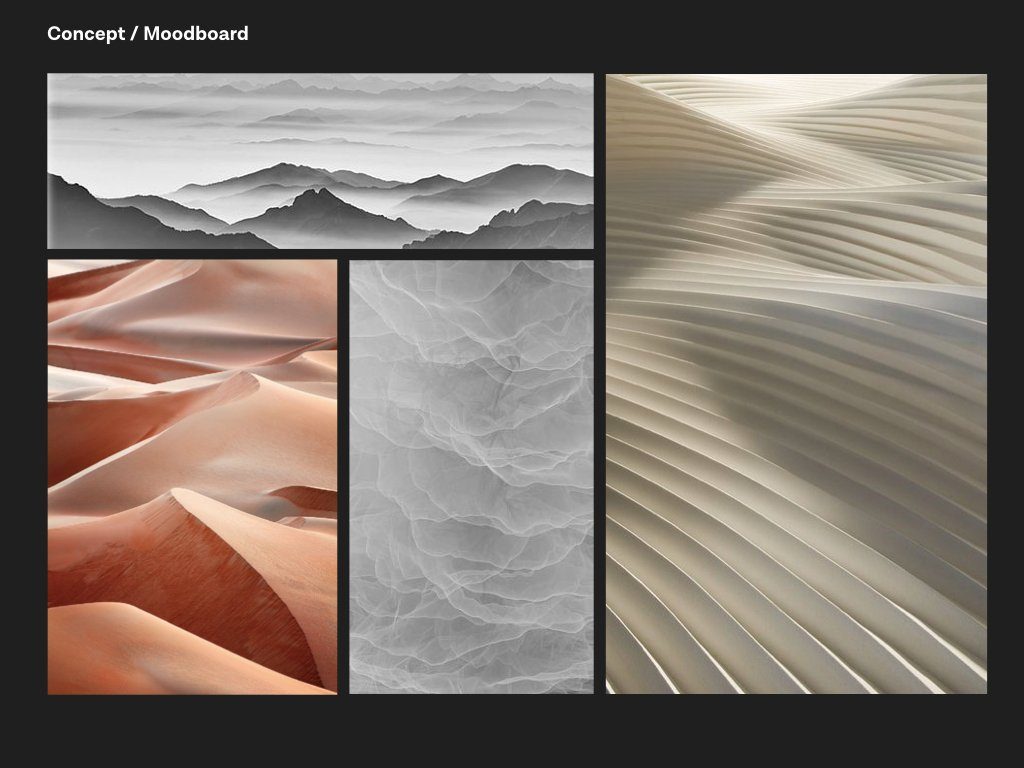In group with Yan Ran and Jiaying.
Silk Road began in the Han dynasty period. Its a journey from China to rome. Some of the goods sold are silk, jade.. etc For our concept the 3 things we would be be focusing on will be its journey, the scenery along route and the calligraphy strokes during the Han dynasty period. We tried to incorporate this element of elbphilharmonie into our concept. Which resembles desert and there are many layers to this element. We are also inspired by the colour schemes of these few design. And therefore we decided to incorporate these earthy tones, Like yellow and brown for our own design.
There are 2 main elements in our design, brushstrokes and waves. Why we decide to use brushstrokes is to represent both the scenery and the trade route. The strokes starts from right to left to represent the journey, Xi’an to rome, which starts from east to west. Another reason that we start from right is because of the Reading and writing habits of Ancient Chinese. Co-currently, there will be more strokes coming in from the left side which represent the scenery along the Silk Road. There are 3 reasons why we chose to use brushstrokes is to depict the history of the Silk Road.
First reason is because the pressure of the brush strokes can be control, it can be both gentle and harsh. Which helps to create a dynamic movement and a sense of depth. Second reason is the strokes on paper look like the track left on sand, is it like the traces that are left behind by the traders/ people that have travelled along this Silk Road. And lastly, as how we do our calligraphy manually, it portrays the times where there wasn’t any advanced technology as people had to manually transport the goods across the country. We intend to use waves to portray the essence of mountain, desert and the ocean in an abstract way. There were more than one route in the Silk Road. Maritime route were also an important part of this network, linking the east and the west by sea. Hence, we decided to use waves in our piece.
